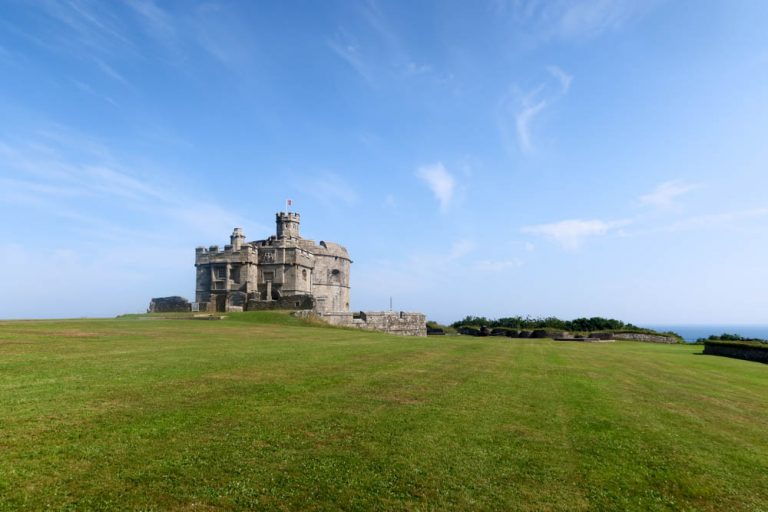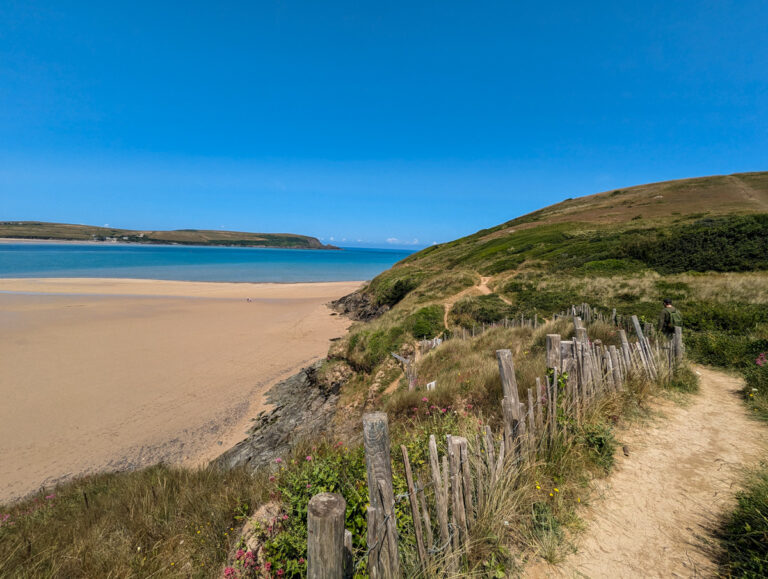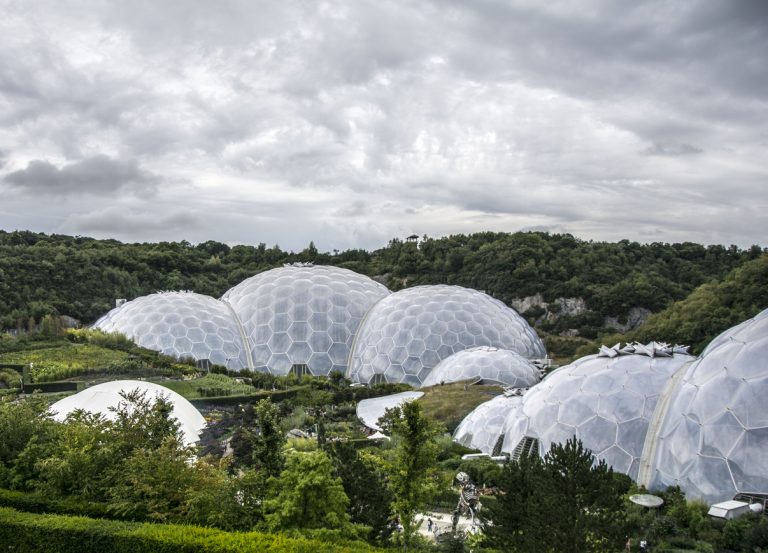20+ Epic Things to do on the Lizard Peninsula in Cornwall
Are you wondering what things to do on the Lizard peninsula?
There’s a range of attractions, from taking in magnificent views of the coastline on its many hikes, to trying local food and drink, to learning about the unique history of the UK’s southernmost area.
This blog post will detail what to do on the Lizard peninsula, so you can use it to plan your holiday!
Things to do on the Lizard Peninsula
The best things to do on the Lizard peninsula include hiking around the 40 miles of coastline, checking out its best beaches – Kynance Cove is the most popular – heading to Lizard Point which is the furthest south point in the country, heading to Cadgwith Cove Inn to hear traditional Cornish singing and camping in some of the most gorgeous spots in Cornwall.
Walk around Porthleven Harbour

Porthleven is near the Lizard and is the most southerly working port in the UK. It retains the atmosphere of a Cornish fishing village, although it is quite sizeable compared to other nearby spots. Porthleven Harbour has huge sea walls and a capacity for 100 boats.
Porthleven town has plenty of shops, restaurants, cafes and pubs, and it is a popular tourist spot – becoming famous of late as the holiday destination of celebrities!
The shingle beach is the start of the Lizard on the western side, and it stretches down to Loe Bar and then to Gunwalloe.
Check out Loe Pool

Loe Pool is situated near Helston and is an excellent place for a walk near the Lizard. Loe means pool in Cornish, so locals often refer to it as “The Loe”.
It is the largest natural lake in Cornwall and is home to lots of wildlife. Boating, fishing and swimming are not permitted here, but it is a perfect place for woodland walks – a trail spans the entire lake.
At the end of the lake, you’ll find Loe Bar, which separates the sea from the lake. This is a fascinating geographical feature, although the waters around this area can be perilous.
Hang out at Poldhu Cove

Poldhu Cove is a popular Lizard peninsula beach. It consists of a long sandy stretch and blue water, with a cafe at the far end.
Poldhu is popular with families as it is so large, and even at high tide, you’ll find a spot of sand here. The beach also has a lifeguard during the summer months, so it is a popular spot for surfing.
But, like anywhere on the Lizard (and in Cornwall!), do be careful when swimming.
The surrounding stretch of coastline is owned by the National Trust and is a particularly stunning part of the Lizard coast path.
Explore Mullion Cove

Mullion Cove, located just a short way from the village of Mullion, is a small historic harbour. It’s a bit different to the dramatic beaches of Kynance and elsewhere, but it’s a charming cove that is popular for watersports.
It’s also worth visiting Mullion Village, the largest village on the Lizard which has historic buildings and quaint streets.
See the beautiful Gunwalloe Church Cove

Gunwalloe Church Cove is a beautiful beach on the western side of the Lizard. Owned by the National Trust, it is also called Gunwalloe Beach and Church Cove. It has a small church with a separate bell tower, which gives the beach its name.
A lot of the Lizard is prone to storms, and Gunwalloe Beach is no exception.
In fact, the church has been called “the church of storms” because of its precarious position. It is a popular spot for surfing but should only be attempted by experienced surfers.
Learn about communications at the Marconi Centre
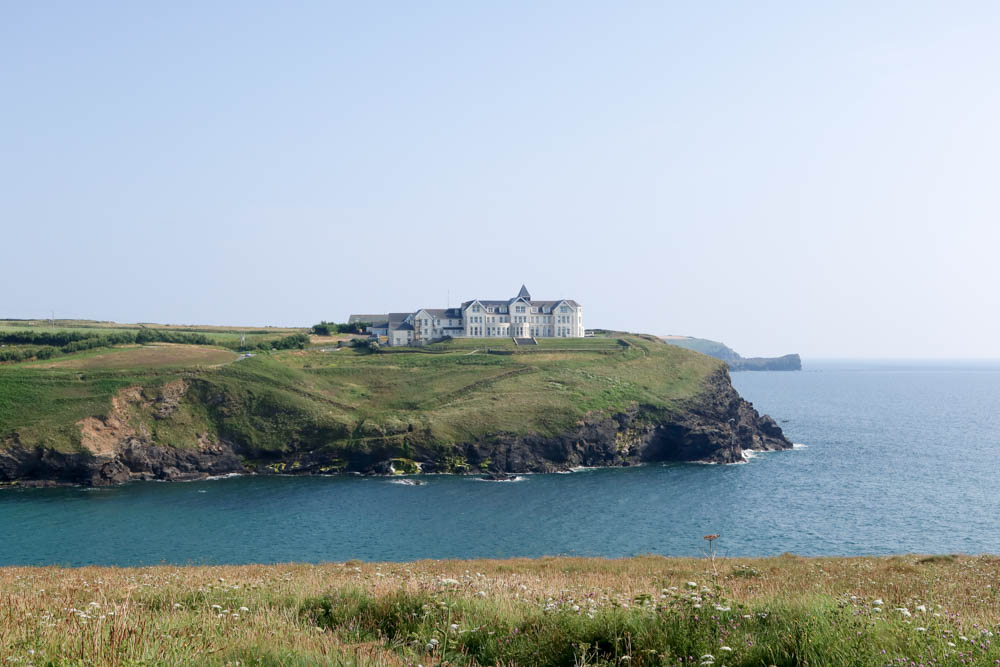
The Marconi Centre is named after Guglielmo Marconi, who was an electrical engineer.
It is on the historic Poldhu Wireless Station site, which was established by Marconi, who wanted to dispel the common myth that radio waves could only travel in straight lines.
He also wanted to build a telegram service that could connect to Canada and other destinations.
You can learn about how Marconi did this at the centre. It is free to visit the Marconi Centre, and its opening times vary. Click here for more information.
You can also visit the Marconi Monument, which commemorates Marconi’s work.
Check out Kynance Cove (and see what the fuss is about!)

Kynance Cove is the most popular beach on the Lizard Peninsula and one of the best beaches in Cornwall.
With beautiful rock formations, white sand and tantalisingly blue waters, it’s easy to see why locals and tourists love this spot.
Kynance Cove is tidal, and it can be hazardous as the tide can cut part of the beach off. Additionally, it doesn’t have a lifeguard. However, there is a cafe above the beach, and it’s a popular part of the Cornish coast.
Here is my full guide to visiting Kynance Cove.
Head to Lizard Point, the most southerly point in the UK

The lizard lighthouse at lizard point marks the furthest south point in mainland UK, and it’s one of the best things to do on the Lizard Peninsula.
Like Land’s End, the furthest southwesterly point of the UK, you’ll get a real sense of being ‘on the end of the world’ while you stand here.
Lizard Point is a historically significant place; people used to watch here for boats travelling back to the country after exploration around the world. Thus, the people at Lizard Point would know of the safe arrival of ships before anywhere else!
The Lizard Lighthouse was built in 1752 by Thomas Fonnereau, and has been crucial for telling ships where the country begins.
At Lizard Point, there are a couple of cafes and a small art studio, as well as ‘the most southerly point’. It’s nowhere near as commercial as Land’s End, and it’s a really nice place to visit!
Hike the South West Coast Path

Coastal paths connect all of Cornwall’s coastal towns and villages, and the Lizard Peninsula is no exception.
You can hike the entire Lizard coast path, or you can just do parts.
My favourite coastal paths are the section in between Lizard Point and Kynanca Cove and Porthleven and Mullion Cove.
Both of these walks have magnificent views over some of the most dramatic scenery on the South West Coast Path!
You can do circular walks by hiking through public footpaths and fields.
An IOS map, or an app like Maps.Me, will help you find these – or you can check out my best hikes on the Lizard blog post!
Walk around Lizard Village

Lizard Village is not only the southernmost Cornish village but the furthest south in the UK. Although it’s not coastal, it is worth popping into when you are visiting Lizard point.
There are a few pubs and restaurants in Lizard Village, including The Top House Inn, which is now the southernmost in the UK.
The southernmost pub used to be between the Top House Inn and the Witchball, but the latter closed its doors in early 2023.
It’s also a charming place to walk around and enjoy the architecture. If you want to stay at the furthest south hotel in the UK, this is not in Lizard village but actually a bit further in Housel Bay Hotel.
Experience fishing culture in Cagdwith Cove

Cagdwith is a lovely Cornish fishing village not too far from Lizard point. With charming thatched-roof cottages spilling down to the sea, Cagdwith seems like a village stuck in time. It is immensely popular with tourists and locals.
It has so many thatched-roofed cottages because of how far it is from the slate producing areas of Cornwall, such as Delabole. So straw was easier to source! The walls of the cottages are made with a local serpentine rock and are incredibly thick – up to four feet in width.
If you visit Cagdwith on a Friday night, be sure to pop into the Cagdwith Cove Inn, which has performances from singers in the Cornish language.
Cagdwith Cove has two small beaches – a fishing and swimming beach separated by a rocky outcrop.
You can take in some beautiful birdseye of the village by hiking a short distance on the South West Coast Path.
Laze on Kennack Sands

Kennack Sands is a large beach on the Lizard peninsula, popular with sunseekers and surfers. There is a vast amount of sand here, as well as plenty of rockpools and a stream. It is on the relatively sheltered east coast, which means that it doesn’t get quite as much wind as the beaches on the other side!
It is popular with beginner surfers and the more experienced when it is too windy elsewhere. There is a seasonal lifeguard – weekends only in the summer outside of school holidays, and daily during school holidays.
If you’re into war history, head to the eastern part of the beach, where there are several WWII remains, including pillboxes and an anti-tank wall.
There is a beach cafe at Kennack Sands, as well as a large car park. You can only pay for a whole day at this car park. If you want to visit for just a couple of hours, there are a few spaces on the steep road traversing down to Kennack Sands.
Enjoy watersports at Coverack

Coverack Harbour is a beautiful spot to visit on the Lizard Peninsula and quite a sizeable village (in Lizard terms, at least!).
Coverack has a long beach spanning the coastline and stretching away from the harbour. It appears to be a rocky beach at high tide, but when the tide is out, there is lots of sand to enjoy.
Coverack also has a picturesque and historic harbour. Dating from 1724, this harbour was used to ship pilchards out from the Lizard. Nowadays, the harbour remains, as do a group of historic cottages.
There are various cafes around Coverack, where you can grab a coffee or a Cornish cream tea.
This area is also very popular for watersports. Coverack windsurfing centre is a great place to learn how to windsurf, and there are kayaking and paddle boarding opportunities too.
Taste ice cream at Roskilly’s Farm
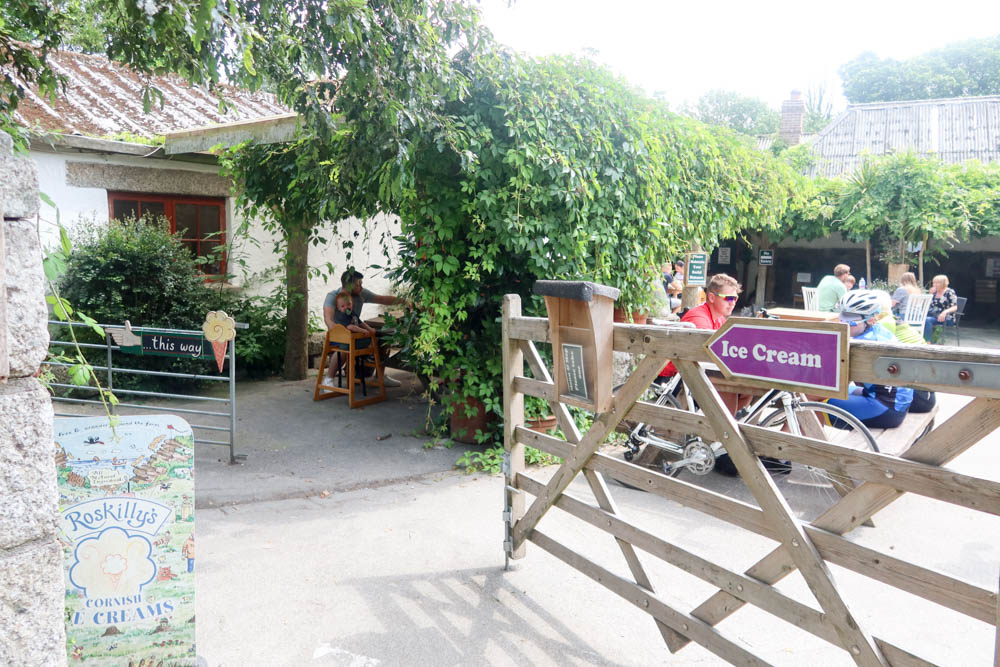
Roskilly’s Farm is famous for its ice cream. You can visit and see the animals, enjoy the ice cream parlour, and sit in their lovely courtyard while consuming some of their delicious food.
The ice cream parlour is probably the most famous part of Roskilly’s. Roskilly’s ice creams are sold all over Cornwall – you’ll find them in ice cream shops from St Michael’s Mount to St Ives!
You can purchase ice cream and other products from the farm. It’s also an excellent spot for woodland walks, with some lovely nature trails.
Visit St Keverne

Away from the Lizard’s stretch of coast, St Keverne is an interesting place to visit – not for beaches, but for history.
St Keverne is where the first Cornish rebellion began in 1497. Headed by Michael Joseph An Gof, the rebellion started because of extra subsidies that Cornish people were asked to pay to fund a war against Scotland.
Cornwall was already poor, with most people working in the unreliable tin mining or agricultural industries. Extra taxes ordered by a government that was very far away from them, for a war on another country that was even further, seemed unjust.
An Gof rallied villagers in St Keverne and then marched peacefully to London, gathering support from the Cornish and Devonians on the way.
However, when they got to Blackheath, the king’s army fought them and captured all the troops that they could. As a result, An Gof and the other leader, Flamank, were hung drawn and quartered.

In St Keverne, you can visit the church which is where it began (there is a plaque commemorating it outside) and see the statue which is on the main road as you drive into the village.
Visit Porthalllow’s Five Pilchards Inn and SWCP halfway marker
Porthallow is a beautiful village with a famous pub – The Five Pilchards – named after Cornwall’s pilchard trade!
It’s also an important place to visit if you’re walking the South West Coast Path, as there is a sign here that marks the mid-point of the coastal path.
The beach is pebbly, but the waters are clear, and it has lovely views across to Falmouth.

It’s also worth visiting the Fat Apples Cafe, which is nearby and serves delicious pub grub and has a wild camping area for hikers.
Explore Trebah Garden
Trebah Garden is a beautiful garden located close to Falmouth. With various sub-tropical plants and its own private beach, a visit to Trebah Gardens is like being abroad!
It’s a wonderful place to admire different plants or just to take in some solitude and reflection. Alternatively, it is dog friendly and a great place for kids too.
It costs £12 for adult or £6 for child admission to Trebah Gardens. They are open daily from 10:00 am to 5:00 pm.
Stock up on booze at Constantine Stores
If you’re a fan of beverages, want to try some local Cornish alcohol, or want to stock up before your holiday or prior to heading home, pay a visit to Constantine Stores.
This looks like a small convenience store from the outside, but it becomes a tardis full of beers, wine, and spirits in the inside. There’s a collection of Cornish gins, as well as lots of other popular beverages from all over the world.
Visit Gweek Seal Sanctuary
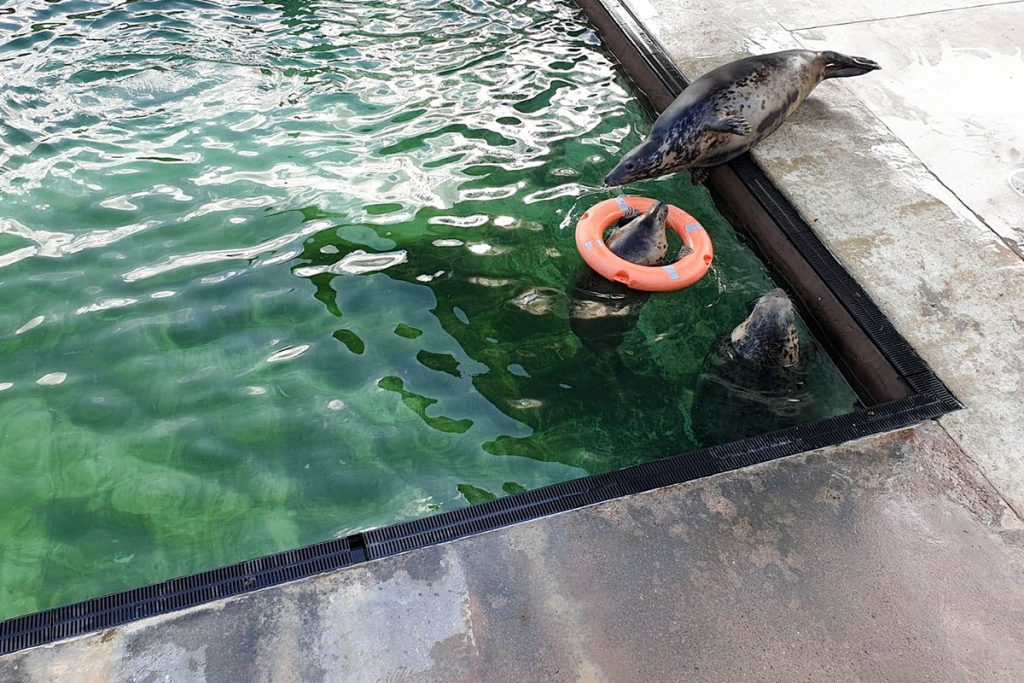
There’s lots of amazing marine life around the Lizard, but none is loved as much as the grey seals. They live along this stretch of coast, but like all animals, they do sometimes get injured.
The Gweek Seal Sanctuary takes them in and rehabilitates them, releasing all who will survive in the wild and offering a permanent home to those who won’t.
You can read more about visiting the Gweek Seal Sanctuary here.
Take a side trip to Falmouth

Falmouth sits on the east of the Lizard, and it’s a Cornwall town that’s well worth your time. There are so many things to do in Falmouth, from marvelling at the historic Pendennis Castle to enjoying a delicious food scene.
The town of Falmouth has a rich history – it was the home of the Falmouth Packet, which connected Britain to the rest of the world and caused Falmouth to become a melting pot of cultures. You can learn all about this with Falmouth Uncovered, which is a walking tour around the town.
If Cornwall’s blue water has entranced you, you might be interested in finding out a little more about the sea. You can do this at the National Maritime Museum Cornwall, which focuses on boats, underwater animals, and Cornwall’s unique connection to the sea.
Falmouth also has some excellent beaches, such as Swanpool Beach and Gyllyngvase Beach, which are a short distance from the town.
Go back in history at Pendennis Castle

Pendennis Castle is one of the best castles in Cornwall. The castle has a fascinating history – it was built by Henry VIII as a coastal fortress and was used for defensive purposes and several wars, including World War One and Two.
There are opportunities to learn about both the Tudor period and Second World War at Pendennis Castle, and it has beautiful views. Along with Tintagel Castle, it is one of the most popular English Heritage properties in Cornwall.
See Helston, one of Cornwall’s oldest towns

Helston is the closest Cornish town to the Lizard peninsula. It isn’t a touristy town, but there are still quite a few things to do here.
If you’re searching for things to do on the Lizard in the rain, The Museum of Cornish Life is one of the best indoor attractions in the area, with exhibitions detailing the social history of Cornwall.
Coronation Park is a large park with a cafe and boating lake, and the Blue Anchor is one of the most historic pubs in Cornwall – and it has smuggling connections.
There are plenty of walks in the fields around Helston, and you can easily walk from here to Loe Pool, Porthleven, and other spots on the Lizard peninsula.
You can also drive to attractions like the National Trust owned Godolphin House and Poldark Mine.
About the Lizard peninsula
The Lizard peninsula sits at the bottom of the UK, with Lizard Point being the furthest south point in the country.
The area is very rural, with a few villages but no large towns (the nearest are Helston and Falmouth). Most of the Lizard is farmland, although it has beautiful sandy beaches that draw in the tourists.
Lizard Point is the furthest south point on mainland UK and is a historic ship watching point.
Why is the Lizard called the Lizard?

Cornwall is full of curious names – and you might think that Lizard is named after the animal.
However, like Mousehole, which is a bit further west, the Anglican word Lizard comes from a Cornish term.
It most likely takes its name from the word “Lis-Ardh”, which means fortress in Cornish. It could be called this due to a historic fortress on this stretch of land.
Other theories suggest that it comes from the words “Lys-Ardh”, which means high court. It has been a historically significant place, so the name could indeed have derived from this term.
Over the centuries, and as Cornwall became more Anglicised, the Cornish term evolved into “Lizard”, which is easier for English speakers to say.
However, with the region’s amazing scenery, you could certainly imagine it being named after a mythical lizard creature!
Places to stay on the lizard peninsula
- Camping: Cadgwith Camping is one of the best spots for camping on the Lizard. It’s a pop-up campsite, with epic views, hot showers and lovely hosts. They are happy to rent out fire pits and bring breakfast or cream tea to your tent! Toilets are portaloos only.
- Caravan: Kitty’s Unique 60s Caravan is a vintage caravan with a kitchen facilities and a comfortable bed. There is a shower block on site. Click here for more information.
- Mid-Range Hotel: Check out The Paris Hotel in Coverack – this is a cosy bed and breakfast situated in a historic building. There are friendly staff and an onsite restaurant. Rooms at The Paris Hotel are spotless and kitted out with plenty of amenities. Click here to read more.
- Luxury Hotel: Housel Bay Hotel is a popular 4* property. Situated right by Lizard point, it has its own private beach area. The hotel has gorgeous sea views, and the rooms are clean and beautiful. There is a restaurant on site. Click here for more information.
Where is the Lizard peninsula?
The Lizard Peninsula is located on the south coast of Cornwall, jutting out into the sea and ending at Lizard point. It is close to Falmouth and Helston.
How to get to the Lizard peninsula

Most tourists drive to the Lizard, as transport links are minimal. If you are going to destinations on the west coast, take the A30 (which starts before Exeter), then the A39, and then the A394 to Helston and then turn onto the A3083 – this is the Lizard main road and leads down to Lizard Point.
For the east coast, you can take the A30 and A39 to Falmouth and then turn onto the B3293. From here, you can follow smaller roads to other Lizard villages.
If you are taking public transport, the 34 bus connects Redruth and Lizard point, stopping in Helston and Mullion. The L1 bus follows the same route but starts in Helston.
A regular bus service also connects Porthleven and Penzance.
The best attractions on the Lizard peninsula!
From excellent hiking opportunities to brilliant beaches to historical points of interest, there are so many amazing things to do on the Lizard peninsula. This is one of the most unspoilt corners of Cornwall, so I’d definitely recommend adding it to any trip to the Duchy!

